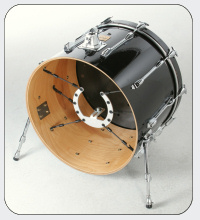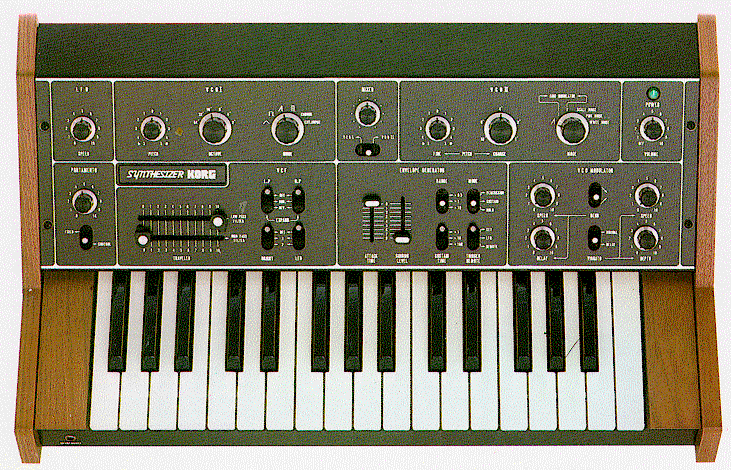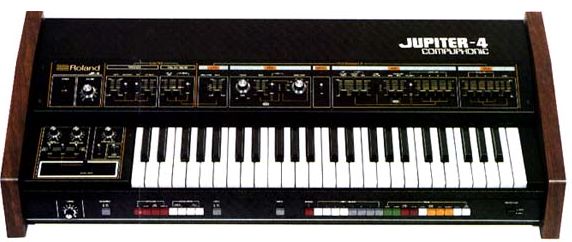Happy new bitpop year everyone :-)
[youtube=http://www.youtube.com/watch?v=NaWky0LWkdA]
In need for 600 oscillators – Alchemy is here
Alchemy is the ultimate sample manipulation synthesizer. It’s a synth powerhouse and yet is very easy to use thanks to its performance controls and remix pads. Just tweak the library of excellent presets from many of the world’s top sound designers or dive in and analyse your own samples – it’s up to you!
Alchemy features additive, spectral and granular synthesis and resynthesis, sampling, and a very capable virtual analog engine with unison and PWM. You can morph or crossfade between sources. You can import your own samples from SFZ, WAV or AIFF files. A wide range of analog modelled filters are included, in addition to a flexible rack of effects which includes all those from CamelPhat and CamelSpace as well as many new effects such as a high quality reverb. The innovative modulation system is extremely flexible, yet easy to use. Alchemy also features a powerful arpeggiator with the ability to import the groove from any MIDI file for immediate synchronization to a beat.

What is Alchemy all about?
- Additive, spectral and granular synthesis and resynthesis, sampling, virtual analog engine with unison and PWM.
- 4 stereo sources each of which has additive, VA, spectral, granular and sampler engine, morph between sources using advanced harmonic blending and precise time alignmen, crossfade between sounds with vector mixin.
- Performance controls and remix for easy tweaking by non-programmers. 16 controls per preset carefully assigned by the preset designer, for instant access to each presets most tweakable paramete.
- 8 remix pad variations per preset – click and drag to morph between variations two XY squares
- You can import your own samples from SFZ, WAV or AIFF files.
- 2GB of samples and analysed content.
- 300 presets covering everything from pads and soundscapes to keys, basses and leads designed by many of the worlds top sound designers.
- 16 effects types including all of the CamelSpace and CamelPhat effects!
- 128 Step Groove Arpeggiator
- Extensive modulatation routing with midi learn
Additive:
- Very high quality analysis and resynthesis – import vocal phrases, drum loops made possible by 600 stereo oscillators
- Realtime modulation of amplitude, pitch and pan spectrums by any modulator – for example, control the odd/even harmonic balance, pan partials using LFOs, stretch or contract the harmonic spectrum and lots more
- Individual amplitude, pitch and pan envelopes for each partial
- Easy to use additive editor with unique detail knob to simplify sounds for editing
Spectral Synthesizer
- Phase vocoder analysis for high quality pitch and time stretching
- Noise resynthesis mode using 256 band noise shaping
- Advanced graphical sonogram editing – choose from a range of brushes and select the colour and opacity
- Graphical spectral cut, copy and paste – cut or copy and paste specific frequency and time regions
- Sampler or granular playback modes
- freely modulatable parameters including grain size, density (up to 10 simultaneous grains), random grain time and random pan
- Selectable and customizable granular window shapes
Free drum samples
Looking for a place to find nice drum samples? At Cyberworm you can find a real nice collection of synthetic drum sample packs from the likes of the Polivoks above, the Jomox, the Access Virus and genre kits like glitch/electro house/minimal.

A whole new approach to kick drum microphone
Kelly Concepts presents the Kelly SHU Composite, the latest addition to the Kelly SHU line of suspended kick drum microphone mounts.
Stage vibrations and low-end transfer can rob an amplified kick drum of its full sonic potential. A shock-mounted kick drum microphone platform is one logical defense against these unwanted mechanical interferences. This innovative new system promises to isolate the kick drum microphone from the drum and the stage that the drum sits on, both at the same time.
The economical new Composite series SHU mounts are injection molded using lightweight yet tough high-density reinforced compounds. The system fits any size or depth of kick drum, utilizing the drum’s existing tuning hardware as attachment points for solid rubber isolation cords. The system accepts any standard kick drum microphone which is designed to fit on a conventional boom stand.

The Kelly SHU™ is a whole new approach to kick drum microphone mounting systems. Both internal and external installations of the system utilize the bass drum’s pre-existing hardware, which then becomes the framework for an integrated kick drum microphone shock mount and isolation support system.
The Kelly SHU™ provides your favorite standard kick drum microphone the shock-mounted, suspended platform needed to ward off stage vibration, low-end soundwave transfer and other mechanical interferences from clouding up your kick drum signal. The lengthy isolation cords provide an effective disconnection of the microphone from the kick drum and the stage that the kick drum sits on, both at the same time.
The KELLY SHU™ kick drum microphone mounting system will eliminate the requirement of a separate stand, boom arm and bulky counter-weight for the kick drum microphone. Not only does the system save you valuable floor space, but you’ll also save time at set-up because the microphone can stay with the drum during transport. The Kelly SHU™ will stay in place, remaining positioned exactly where you want it every time you move and set up the drums! Just plug in and GO!
The Kelly SHU™ provides countless mounting positions – the adjustment possibilities are virtual unlimited! The system can be installed either inside the drum or on the front of the drum with both installations having equal benefit of the isolation and shockmount properties of our suspended system. Detailed instructions for both installation options are included with each system.
A few minutes, a tool to fit your interior tuning lug hardware screws and a pair of scissors is all you need to install The Kelly SHU™. It really couldn’t be easier! For external installation, the scissors alone will get the job done. The Kelly SHU™ accepts standard XLR bass drum microphones and clips with no drilling required for installation!
New Reason Refills from Youproduce
Merry Xmas everyone :-)# 01 # DOWNLOAD: ReVolution Refill ReVolution Refill is the second effect refill made by Flandersh Production. Last one was released in 2006, and now in 2008 the next is ready. From that time Flandersh Production has changed its name to Flandersh Vibes. This refill has more advanced designed techs than the last one, and reach maybe a bigger area of use. From general mixdown patches to wild panning tools, and from huge analyze tools to mad filter effects. http://youproduce.net/index.php?option=com_content&task=view&id=8659&Itemid=1 # 02 # DOWNLOAD: KICK IT! Another new ReFill by maustaste: KICK IT. - 474 Kicks all Wav Samples. - Sortet by Category Drumsound Groups - BANK 01-Drum Library (In Subfolders with all sortet Wav files) - BANK 02-NN-XT Preview Multi Programs for easy stepping through the refill by browsing the sounds in NN-XT... This Refill features a lot of drumsounds I archived for about 13 Years. In this time I compiled my favorites in this Free Reason ReFill from over thousend drum & co. samples. (Techno/Hardcore "Rotterdam Style", House, OldStyle, Effect, Linn),Snares,Claps,Percussion,Toms,Crashes and many more… http://youproduce.net/index.php?option=com_content&task=view&id=8756&Itemid=1
Daniel Miller on the radio

Daniel Miller needs no introduction, right? Producer of all early Depeche Mode albums, founder and Executive Chairman of Mute records, which signed artists like Fad Gadget, DAF, Cabaret Voltair, Yazoo, Erasure, Nitzer Ebb, Richie Hawtin, Miss Kitten, Sonic Youth, Nick Cave, Goldfrapp….. need I go on more…
If you want tap into what the man is into now go to the German Radio Eins home page and listen to Happy Miller Hour bi-monthly radio show.
If you ever been curious about what synthesizers Daniel Miller’s been using all those years, here’s an in-depth interview on that. http://www.soundonsound.com/sos/dec98/articles/daniel.624.htm
Early days of Human League pt. 2
I have to say I really respect Human Leagues consequent decision to only use synthesizers. At the time (late 70s) synthesizer was not considered proper instruments by many. No many bands was that hard core but Kraftwerk paved the way. Most new wave artists used guitars and drum in combination with synthesizers. All sounds on Reproduction and Travelogue are made by 3 synthesizers; Korg 770, Roland Jupiter 4 and Roland System 100 (not to be confused with Roland System 100M) and then vocals.



Listening through the two albums Reproduction and Travelogue there are many fat bass lines. How are they made?
Now you’ve might heard of Roland Jupiter 4 http://www.bluesynths.com/modules.php?name=Reviews&rop=showcontent&id=30 as the little brother of the mighty Roland Jupiter 8 http://www.arturia.com/evolution/en/products/jupiter-8v/intro.html. Looking at the spec of the Juniper 4 is appears to be very poorly equipped. It has ONE single oscillator per voice. No where near the Minimoogs 3 oscillators or the Prophet 5 two per voice. But all those fat basses are made by the Jupiter 4 set to unison mode! And the arpeggio is made to good use on several songs too. Also many melodies are played on the Juniper 4 as well in the polyphonic mode. For most drums and percussion the System 100 with it’s sequencer is used. Note that the sequencer is 2 times 12 steps but it can be chained up to 24 steps. Otherwise there would have been lots of waltzes on those albums…
Twenty Synthesizers
The composer Benge has released and album called twenty systems. Twenty pieces are included and each piece is created using only one synthesizer. As there are 20 pieces there twenty different synthesizers are used. The synthesizers are selected one for each year 1968 to 1988 – twenty years. The idea was to demonstrate the development of the synthesizers from the first commercial available system up to the fully digital systems in the late 1980s.

Tracklisting:
1968 Moog Modular 3C
1969 EMS VCS3
1970 ARP 2500
1971 ARP 2600
1972 Serge Modular
1973 Roland SH2000
1974 Oberheim SEM
1975 Moog Polymoog
1976 Yamaha CS80
1977 Yamaha CS30
1978 Roland 100M
1979 Korg Lambda
1980 Korg Trident
1981 Yamaha CS70M
1982 PPG Wave
1983 Fairlight CMI
1984 Oberheim Xpander
1985 Yamaha CX5M
1986 NED Synclavier
1987 Kawai K5M
Brian Eno called the album “a brilliant contribution to the archaeology of electronic music” .
http://www.expandingrecords.com/releases.html
The Art of Noises
Using noise in a musical context is today quite straight forward using samplers and synthesizers. E.g the band Art of Noise made good use of the Fairlight CMI sampler in 1980s and 90s. Their hit single Close (To The Edit) make good use of industrial and mechanical noises.
[youtube=http://www.youtube.com/watch?v=-sFK0-lcjGU]
But before of the birth of the sampler and even the synthesizer you were let to your own imagination. One man that had imagination was italian Luigi Rossolo. In 1913 he wrote a letter to a friend Pratella argueing that the human ear has become accustomed to the speed, energy, and noise of the urban industrial soundscape; furthermore, this new sonic palette requires a new approach to musical instrumentation and composition. He proposes a number of conclusions about how electronics and other technology will allow futurist musicians to “substitute for the limited variety of timbres that the orchestra possesses today the infinite variety of timbres in noises, reproduced with appropriate mechanisms”.
The next step for Luigi Rossolo was to invent a number of instruments he called The Intonarumori (noise intoners). Here’s a list of some of his inventions:
- Gracidatore (the Croaker)
- Crepitatore (the Cracker)
- Stroppicciatore (the Rubber)
- Scoppiatore (the Burster)
- Sibilatore (the Whistler)
- Gorgogliatore (the Gurgler)
- Ululatore (the Howler)
- Ronzatore (the Hummer)
Each instrument was constructed of a parallelepiped wooden sound box with a metal radiating horn on its front side. Inside the box was a wheel that, when turned by means of a crank or electric button, caused a catgut or metal string to vibrate. The wheel could be made of either metal or wood, and the shape and diameter of the wheel varied depending on the model. At one end of the string there was a drumhead that transmits the vibrations to the speaker. The pitch of the vibrating string was controlled by both the speed that the wheel was cranked and by the tension of the string, which was controlled by a lever on top of the box. The lever allowed the performer to play glissandos or specific notes, and also allowed the performer to change the pitch by small intervals. The intonarumori often had a range of more than an octave.
If you want to build your own contemporary instruments today, Reaktor by Native Instruments is a good tool. In the Reaktor User Library you can find a number of instruments that are inspired by Rossolo created by Rick Scott and Dieter Zobel.
http://www.native-instruments.com/index.php?id=userlibrary&type=0&ulbr=1&plview=detail&patchid=4431
Early days of Human League pt.1
I guess anyone even vaguely interested in electronic/synth-based pop music have heard of Human League. They had major hit songs like “Don’t you want me baby”, “The Lebanon” and many more in the 1980/90’s. But Human League had a life before their major hit album Dare released in 1981. In fact they made two albums, Reproduction and Travelogue.
The group was formed in 1977 and recorded their first album in 1979, Reproduction.
Reproduction never had an impact in the charts but Travelogue made it to no. 16 on the UK album chart. The relationship between Oakey and Ware had always been turbulent. The lack of success compared with the success of Gary Numan’s work at that time had brought matters to a head. Ware insisted the band maintain their pure electronic sound while Oakey wanted to emulate more successful pop groups. This led to Ware and Marsh leaving the band and forming Heaven 17.
What made them stand out a bit from other electro pop/new wave acts at the time like Gary Numan, YMO and Ultravox is that they just like Kraftwerk (after the Autobahn album) only used synthesizer instruments. No acoustic drum, electric guitars nor basses.
[youtube=http://uk.youtube.com/watch?v=e0YVOIKX0IQ]
[youtube=http://uk.youtube.com/watch?v=XYepvarTsVM&feature=related]
[youtube=http://uk.youtube.com/watch?v=CNrnmDmffRc&feature=related]



